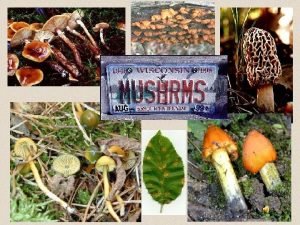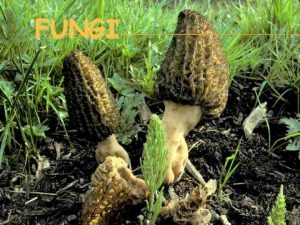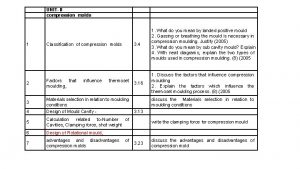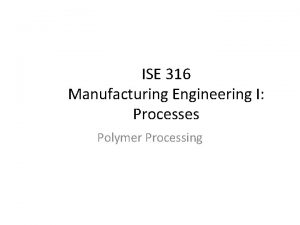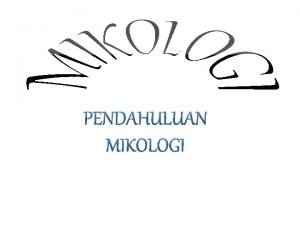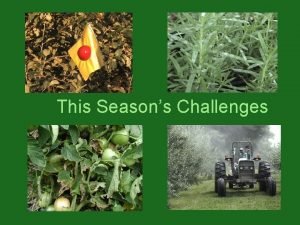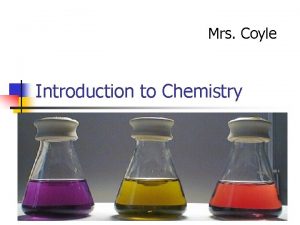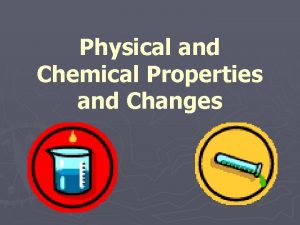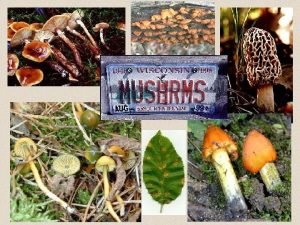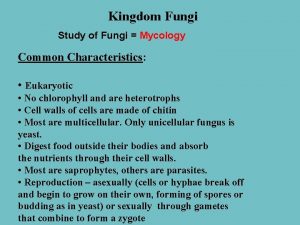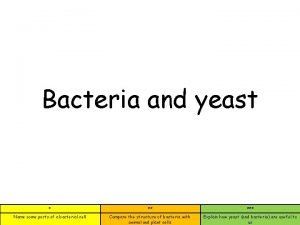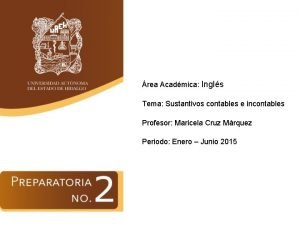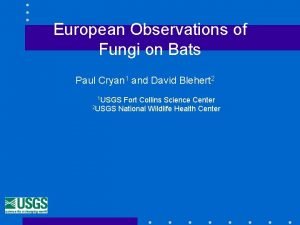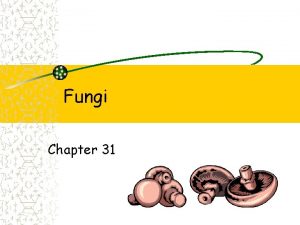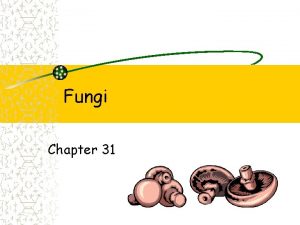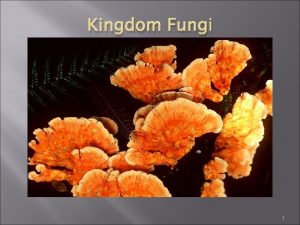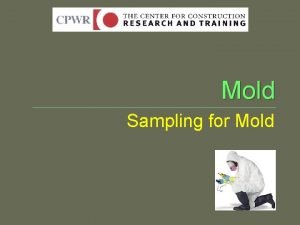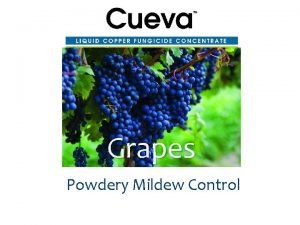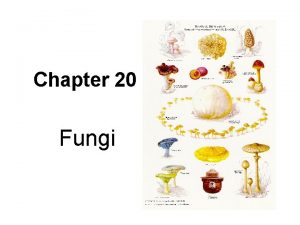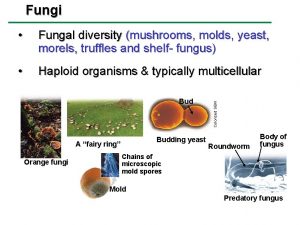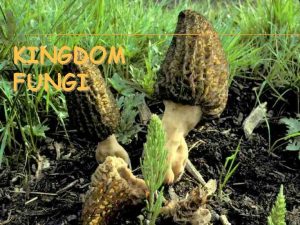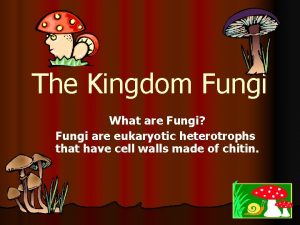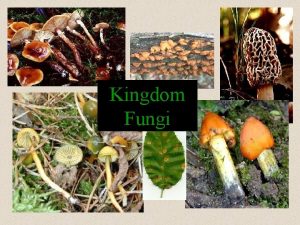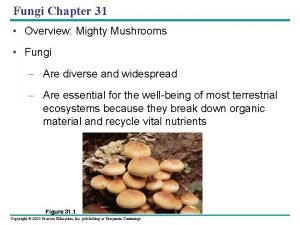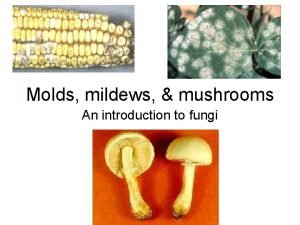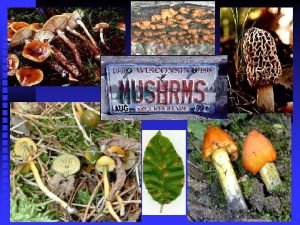Kingdom Fungi Mushrooms Yeast Mold Mildew Rusts I





















- Slides: 21

Kingdom Fungi Mushrooms, Yeast, Mold, Mildew, Rusts

I. General Characteristics A. Feeding Pattern = Heterotrophic 1. Secretes enzymes 2. Absorbs nutrients B. Multi-cellular, eukaryotic Exception: yeast = unicellular

I. General Characteristics C. Structure = mass of Hyphae (filaments) 1. Mass of hyphae underground = mycelium 2. Secrete enzymes 3. Hyphae surface area, ∴ rate of absorption & growth

Fairy Ring = ring of mushrooms Mycelium in center has used up all the nutrients

I. General Characteristics D. Cell walls contain chitin (same as exoskeletons of insects) E. Habitat = warm, moist

I. General Characteristics F. Reproduction = BOTH asexual & sexual 1. Asexual = spores 2. Sexual = fusion of + & − hyphae types 3. Sporangia (spore cases) made 4. Spores made in sporangia

I. General Characteristics F. Reproduction = BOTH asexual & sexual 5. Exception : Phylum Deuteromycota (Imperfect Fungi) ASEXUAL ONLY 6. Exception: Yeast ASEXUAL ONLY (budding) ? s 1 -10

I. General Characteristics G. Ecological Roles 1. Decomposition / recycling of nutrients 2. Food source 3. Help in food / drink production

I. General Characteristics G. Ecological Roles 4. Symbiosis a. Lichens – cyanobacteria or alga + fungus

I. General Characteristics G. Ecological Roles 4. Symbiosis b. Mycorizzae – fungus + plant roots rate of absorption / growth

I. General Characteristics G. Ecological Roles 5. Pathogens (ringworm, wheat rust, athlete’s foot) 6. Source of Antibiotics E. g. Penicillin

II. Yeast A. Uses = Making food 1. Bread 2. Brewing 3. Wine 4. Soy sauce B. Repro. by budding

III. Phyla of Fungi A. Zygomycota E. g. black bread mold

III. Phyla of Fungi B. Ascomycota E. g. yeast, morels, truffles

Truffles Oak tree roots n Grow underground, on the roots of oak trees n Cannot be cultivated n Very expensive delicacy n Hunted with pigs or dogs

Hunting for Truffles

III. Phyla of Fungi C. Basidiomycota E. g. most mushrooms, bracket fungus, puff balls, rusts


Wheat Rust

III. Phyla of Fungi D. Deuteromycota (Imperfect Fungi) E. g. penicillin, ringworm, athlete’s foot

Penicillin (First antibiotic) Discovered by Alexander Fleming In 1928 ? s 11 -18 Penicillin on an orange
 Club fungi are morels truffles bracket fungi yeast
Club fungi are morels truffles bracket fungi yeast General characteristics of fungi
General characteristics of fungi Eukarya fungi
Eukarya fungi Similarities between protists and fungi
Similarities between protists and fungi Kingdom plantae characteristics
Kingdom plantae characteristics Giant kelp phylum
Giant kelp phylum Pot type & plunger type are the classification of
Pot type & plunger type are the classification of Pot type mold & plunger type mold are the classification of
Pot type mold & plunger type mold are the classification of Berasal dari
Berasal dari Mentohotep
Mentohotep Old kingdom middle kingdom new kingdom
Old kingdom middle kingdom new kingdom Old kingdom middle kingdom new kingdom
Old kingdom middle kingdom new kingdom Old kingdom middle kingdom new kingdom
Old kingdom middle kingdom new kingdom Powdery mildew on rosemary
Powdery mildew on rosemary Mrs_coyle
Mrs_coyle What is a chemical property
What is a chemical property Yeast and truffles are _____ fungi.
Yeast and truffles are _____ fungi. Fungi
Fungi Name
Name Workbook es contable o incontable
Workbook es contable o incontable Mushrooms or fruit bats
Mushrooms or fruit bats Countable and uncountable nouns some any much many
Countable and uncountable nouns some any much many
